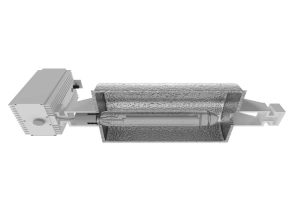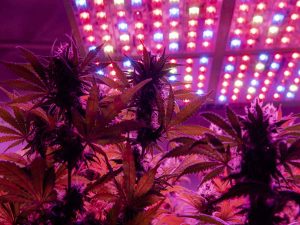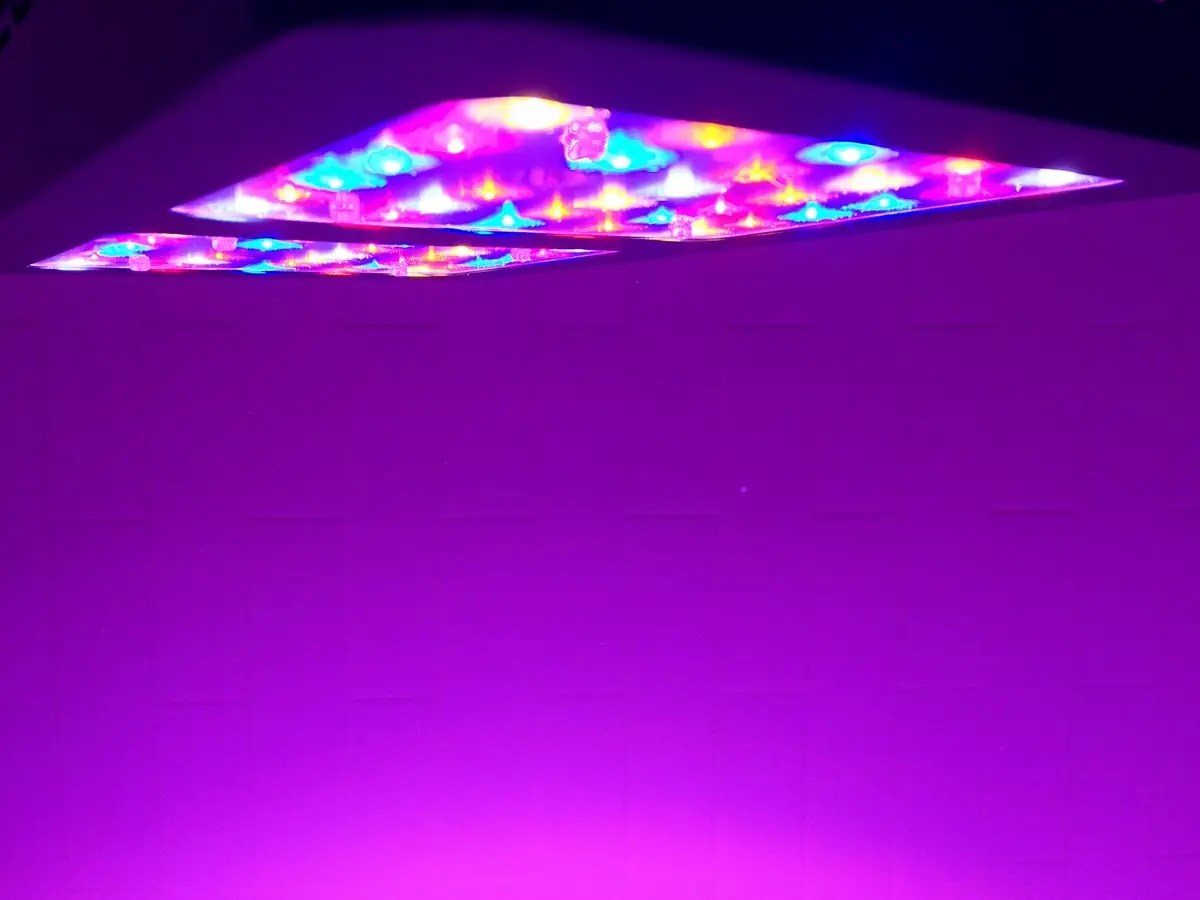Choosing between High-Pressure Sodium (HPS) and LED lights is among the decisions that leave most indoor cannabis growers scratching their heads. The dilemma is rightly justified; selecting the right grow-light is an immense task.
Numerous attractive ad campaigns make the situation even more complicated, with innumerable opinions from brands on either side. If choosing an appropriate grow light forms the weak link in your indoor growing strategy, then a bad move will ruin your effort.
This detailed guide reviews the two common grow light alternatives, their ups and downs, and the critical comparison points.
Table of Contents
HPS Grow Lights

HPS lights have been considered the available solution for amateur growers and professionals alike for ages. The key to their massive acceptance is the implausible raw light output. Their massive light output makes them especially ideal for flowering, but they discharge lots of heat to release light with minimal value to plant growth.
Most HPS users usually rely on metal-halide‘s better light spectrum that enhances vegetative growth. This means that you can’t entirely rely on this system; you require separate lights for flowering and veg stages. This contributes significantly to maintenance expenses.
The Advantages of HPS Lights
- The initial startup cost is relatively lower, through the price gap continues to diminish since more affordable LED alternatives are coming out.
- The wide array of products is more standardized, simplifying the comparisons and shopping decisions.
- The raw light intensity is immense, and you can get higher yields if you’re working with smaller plants.
The Disadvantages of HPS Lights
- Over time, the light intensity diminishes significantly. You must replace the bulb every 12 to 18 months.
- The lights are much less efficient.
- They generate lots of heat, hence the need for additional ventilation for the correct grow room temperature.
LED Grow Lights

On the other hand, LED lights are undoubtedly a noteworthy technology feat. This advanced lighting system is by far the most effective, with remarkable efficiency. The light variety combines thermal management technology, advanced optics, and precise spectral output to convert up to 100 percent of the energy consumed into useful light for growth.
This explains how these revolutionary lighting systems achieve excellent yields while consuming way less power than HPS. The fixtures also require minimal maintenance besides occasional cleaning. You may use a single lighting system from planting to harvest since LEDs offer optimized spectrums for the plants’ full growth cycle. Some are adjustable to match different growth phases.
The Advantages of LED Lights
- The systems come in comprehensive and easy-to-use all-in-one fixtures that work even for tight spaces with a lower potential for heat damage.
- LED grow light systems are cooler, hence a wide range of obvious benefits to your indoor growing project.
- Today’s most advanced models are way efficient, consuming nearly half the wattage used by their HPS counterparts.
The Disadvantages of LED Lights
- The heat produced is very little, and this may be a setback for most indoor growers. But you can always supplement the heat using alternatives like MH and HPS.
- The different brands aren’t standard, so it can be hard to make comparisons. Still, the industry has advanced its design practices, and consistency is now evident.
- You may pay higher upfront costs. But in the long run, you’ll get value and save on operation and energy costs.
What's Better LED or HPS?
LED lights are better than HPS lights. LED lights consume less power, require little maintenance, and are cooler than HPS lights. Since HPS lights release a lot of heat, they increase the operational costs because you’ll need additional ventilation equipment to keep the grow room temperatures at the optimum.
HPS vs. LED Grow Lights Comparison Table
HPS Vs. LED: Yield
Apart from quality, this is possibly the most controversial debate. But yield primarily depends on your knowledge and abilities and not the light variety. The industry minimum yield for HPS lighting systems is about half a gram (.5) for every watt consumed. This translates to about 500 g (slightly over a pound) of harvest for the 1,000-watt fixture.
The overall yield may not be a determinant, but it’s the primary consideration factor when choosing between the two lighting alternatives.
A study dubbed ‘The Effect of Light Spectrum on Cannabis Sativa Morphology, and Cannabinoid Content’ was presented at the 2017 edition of the Cannabinoid Conference (Cologne, Germany). The two-year academic survey notes significantly higher yield and more internodes on the plants. According to the research, LED delivers a higher cannabinoid yield of between 26 – 38 percent than its HPS counterpart.
HPS Vs. LED: Energy Consumption
The most significant difference between the two indoor lights is evident in energy consumption. For one, there’s an enormous difference of wattage difference, offering remarkable savings on energy output. You’ll also save on areas like exhaust fans, humidity and temperature control, ballasts, maintenance, and HVAC. Put together, HPS lighting is your entire project’s most prominent energy guzzler, and a switch to LED is vital.
Your overall energy consumption in the entire operation includes exhaust and ventilation fans and controls for humidity, temperature, and CO2. All these will be become obsolete, hence even bigger savings benefits in maintenance cost.
Full-Spectrum LEDs We Recommend...
No products found.
HPS Vs. LED Heat Production
It doesn’t matter the type of HPS lamps you’re using; you will struggle with a heated indoor growing environment. A simple 250-watt appliance will produce sufficient heat to demand ventilation. HPS fixtures don’t come with a reliable solution for the heat, and you’ll have to work your way around the challenge.
Common remedies for the heat problem include fan-powered exhausts for every bulb, massive AC units that function whenever your lights are on, and even afterward. This could lead to more issues if your garden’s location doesn’t favor cannabis growing.
HPS bulbs emit this heat because the light production process involves ignition. Their LED counterparts leverage thin semiconductor-material layers that have alternating deficient and excess amounts. This disparity causes electrons to move within the bulb, emitting light. The heat released per watt in this system is far less, hence the most efficient technology.
The fixtures’ metal frame also comes in handy with heat regulation. The contraction serves as a heat-sink that further decreases and dissipates the heat output.
HPS vs. LED: Photosynthetic Photo Flux (PPF) & Density (PPFD)
LED systems emit more light thanks to the larger and denser source, improving the PAR (Photosynthetically Active Radiation) and better canopy penetration. The PPF and PPFD levels are also higher, ranging between 700 – 1,000. These fixtures are even larger and wider to sustain a more robust and denser plant population.
On the other hand, HPS lamps are limited in light distribution and size. As a result, you’ll have hot-spots on your plantation and your plants’ PPFD map. The PPFD will be high on the ray’s center but diminishes towards the area’s end. LED fixtures don’t have this issue. The diodes are placed and clustered adequately to deliver accurate PPFD from every point of your unit.
The final issue is that HPS fixtures release a distinct, intense yellow light which benefits photosynthesis in a minor way.
HPS Vs. LED: Area and Spacing
Among the most vital factors that you cannot afford to make a mistake about is the environment. Removing your hotter HPS fixture will create a larger, stable, and easy-to-maintain space. The immediate changes may include a less humid surrounding and temperature stability. You’ll also get rid of the obsolete physical components to leave more room for your plants.
HPS Vs. LED: Upfront Costs
This is the only category where HPS fixtures win immensely. Luckily, the last few years have seen a decline in upfront cost for LED grow technology, thanks to competition. LED engineering has also advanced. But though the cost has decreased, LED upfront expenses still surpass that of HPS. Every major greenhouse, facility, or grow room requires heat regulation solutions, whether it uses LED or HPS fixtures. But the two differ in the usage and size of the auxiliary elements.
When choosing a lighting solution, the upfront cost is essential. But remember that LED systems will help you save on every component of your lighting system.
High-Quality HPS Grow Lights ...
No products found.
LED Vs. HPS: Lifetime Value
The industry-standard warranty for LED fixtures is 100,000 hours. Though expensive, here’s why your installation is worth our dime.
You must change your HPS bulbs every two or three cycles, which is between six and nine months. The lamps lose their PPF and efficiency. For a typical three-month growth cycle, you need at least 16 hours of light daily in the vegetation state, which totals 480 hours. The second and third months require 12 hours, totaling 720 hours. So from your average HPS bulb, you get between 2,400 to 3,600 hours.
In the end, the pay per hour for LED will be .015 cents per hour, while that of HPS will be .83 cents per hour. This means the LED fixture is 55 times efficient per hour. Notably, these figures are based on a $200 HPS fixture versus a $1.500 LED installation.
This calculation shows that where the HPS light will last two to three cycles, the LED counterpart may last about 83 cycles.
HPS Vs. LED: Safety
This is arguably the most underrated consideration. Migrating from an HPS system enhances operational safety and your wellbeing. IT eases upkeep and leaves behind a relaxed environment.
As already covered, a standard 1,000-watt HPS lamp releases substantial heat that demands ventilation.
Multiple such lightings can pose a fire hazard to the plants, tents, and room. You might also get burned when replacing the bulb or moving through your indoor garden. You may have to wait for too long for the bulb to cool. But with an LED, there are no fire risks or burn.
The Bottom Line
Both the HPS and LED fixtures can equally deliver excellent yields, and each solution has its unique advantages over the other. If you have no problem with the initial cost, your decision to narrow down to other vital factors contributing to plant growth is a better option. These include the growing approach you plan to implement, your grow area’s size, and ambient conditions.

